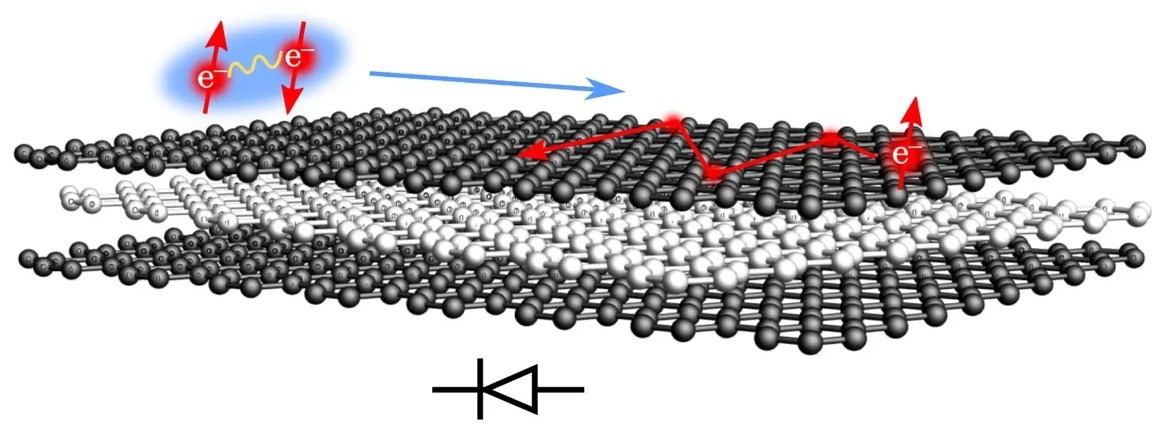Superconductors are the secret to lossless current flow. However, the development of superconducting diodes has only lately emerged as a crucial area for basic research.
 Trilayer graphene is a promising platform for the superconducting diode effect. Image Credit: University of Innsbruck
Trilayer graphene is a promising platform for the superconducting diode effect. Image Credit: University of Innsbruck
An international research group led by theoretical physicist Mathias Scheurer has now accomplished the development of a superconducting diode effect without an external magnetic field. This is covered in a report in Nature Physics.
When a substance acts like a superconductor in one direction of current flow and like a resistor in the other, this is referred to as a superconducting diode effect. Such a superconducting diode, in contrast to a regular diode, shows a fully vanishing resistance and hence no losses in the forward direction.
This might serve as the foundation for upcoming lossless quantum electronics. About two years ago, physicists achieved the diode effect for the first time, but with some important restrictions.
At that time, the effect was very weak and it was generated by an external magnetic field, which is very disadvantageous in potential technological applications.
Mathias Scheurer, Institute of Theoretical Physics, University of Innsbruck
The recent edition of Nature Physics features novel experiments conducted by experimental physicists from renowned U.S. Brown University that do not require an outside magnetic field.
Along with the aforementioned benefits for applications, Mathias Scheurer’s earlier theory is supported by the experiments: Specifically, that superconductivity and magnetism coexist in a structure made up of three twisted layers of graphene. By effectively producing its internal magnetic field, the system produces a diode effect.
“The diode effect observed by colleagues at Brown University was additionally very strong. Moreover, the diode direction can be reversed by a simple electric field. Together, this makes trilayer graphene such a promising platform for the superconducting diode effect,” explains Mathias Scheurer, whose study of two-dimensional materials, particularly graphene, earned him an ERC Starting Grant this year.
Promising Material Graphene
A single sheet of carbon atoms organized in a honeycomb pattern makes up graphene, a substance that also created the diode effect mentioned in Nature Physics. Three graphene layers can twist against each other to conduct electricity without loss when numerous layers of graphene are stacked on top of one another.
The demonstration of the coexistence of superconductivity and magnetism by the presence of a superconducting diode effect in this system in the absence of an external magnetic field has significant ramifications for the investigation of the intricate physical behavior of twisted trilayer graphene.
This demonstrates that the diode effect has the potential to advance our knowledge of key mechanisms in many-body physics in addition to its technological application. Another prestigious publication has already published the theoretical underpinnings of this work.
Journal Reference:
Lin, J-X., et al. (2022) Zero-field superconducting diode effect in small-twist-angle trilayer graphene. Nature Physics. doi.org/10.1038/s41567-022-01700-1.